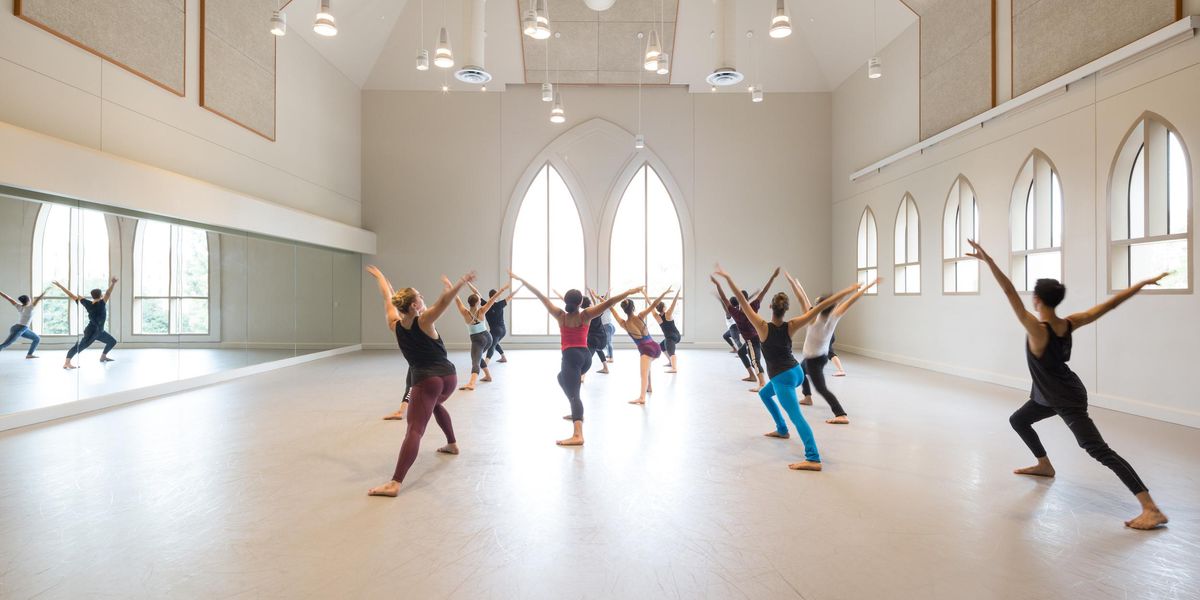Wheeldon’s New Piece: More Than a Daring Experiment
Some kind of alchemical reaction happens in Christopher Wheeldon’s new Five Movements, Three Repeats, shown at Fall for Dance. Mixing one modern dance star with one ballet superstar and two other NYCB dancers, it could have been a disaster. Instead, it’s a beautifully patient piece that glows with inventiveness.
However, when I saw the premiere at Vail in August I thought the piece was in trouble, as I wrote in my blog post. It seemed vague and unconnected to me. The more complete lighting (by Mary Louise Geiger) at City Center sharpened the picture for me.
Taking the lead from Fang-Yi Sheu’s sinuous quality, Wheeldon allowed himself to be pulled into new territory, thus pulling his other dancers and audience along too. Sheu starts with sort of oblong tai chi movements for the hands. She leans back in a hinge that almost goes too far, then recovers and lunges sideways. Only then does the Max Richter music come on; only then do Craig Hall and Tyler Angle start moving; only then does Wendy Whelan enter with bourrées. Gradually the four become equals.
This same sequence repeats three more time, each with different lighting, and once reversed, front to back. There is always something new to see in this seemingly random relationship between four breath-taking dancers, each in their own world.
Tyler Angle and Wendy Whelan in Christopher Wheeldon’s
Five Movements, Three Repeats. Photo by Erin Baiano, Courtesy VIDF.
In other sections, they join worlds. The duet for Whelan and Angle is exquisite in the same way Wheeldon’s previous duets for Whelan have been (Liturgy and After the Rain). Angle ducks under her arm or leg, creating a softer kind of chivalry than the Balanchine chivalry. Some things are familiar: the unison criss-crossing of hands in the air, as in Liturgy; Whelan as prow of a ship as in After the Rain (although not as extended into space here). This kind of slippery duet is home territory for both Whelan and Wheeldon, and it’s the only part that is identifiable as Wheeldon.
The duet of Sheu and Hall is more surprising in its unity. Grittier, closer to the earth, the two seem made for each other. Her extraordinary use of the back is contagious: I’ve never seen Hall so juicily articulate in his torso.
Fang-Yi Sheu
and Craig Hall in Wheeldon’s
Five Movements, Three Repeats. Photo by Erin Baiano, Courtesy VIDF.
I can discern only one movement that appears in both duets: an action of kissing on both cheeks—that European-style kissing between friends. It’s clearer in the Whelan/Angle duet, amplified to be larger and not actually touching in the Sheu/Hall duet. Other than that, these two duets are so different they could be in different ballets. The evocative music gives them coherence.
The fifth movement brings all four together in a sweet quartet. At one point, held by opposite partners, the two women reach out and join both hands, like aerialists, like sisters. I find both Whelan and Sheu so magnetic that I usually cannot look anywhere else when one of them is performing. But Wheeldon somehow allows us to absorb both on the same stage as part of a quartet.
The repeat of the first section is an ingenious way to get us to pay attention. But what got me more what the sense of harmony between radically different styles. I was so moved, the same way I was moved when seeing the original Deuce Coupe by Twyla Tharp in 1973. The vision she had of harmony between ballet and modern dance was both thrilling and comforting. I felt the same kind of vision of harmony here.
With three ballet dancers, Five Movements, Three Repeats could have been an airy piece. Yet the repeats brought it back down to earth. See this again: same but different. At the beginning the dancers are strangers to each other and to us. Now, seeing the last repeat, we know something about each one.




